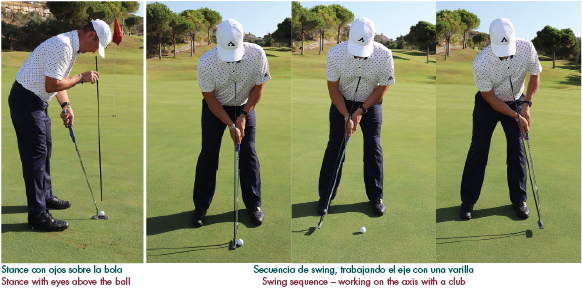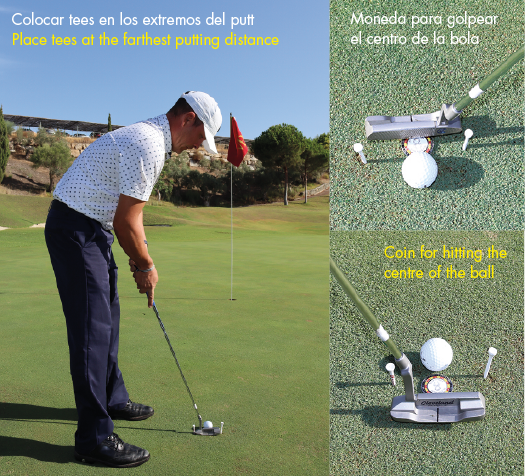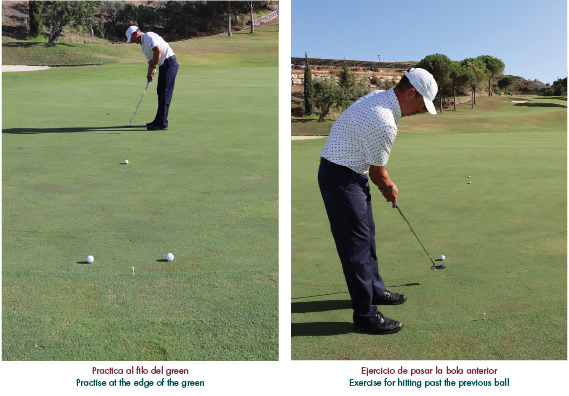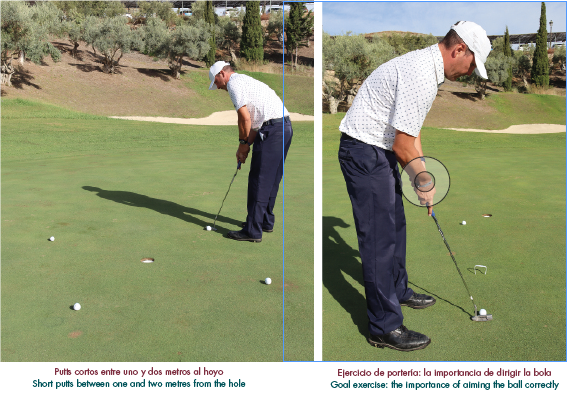David Gil was 19 when, in 1998, he started working as a golf professional in Almenara (Sotogrande), creating the first CAR academy in Andalucía.
He subsequently travelled to England where he worked at the David Leadbetter Academy. On his return, he created the Sotogrande Junior Golf School, where players who went on to become top professionals have been coached.
Always linked to education, in 2010 he became involved in an international project in Sicily, where he was closely associated with Italy’s national teams and coaches.
With a masters degree in management and golf course management, David worked in golf operations for Andalucía’s leading courses. In 2018 he joined “TGA Golf Academy by Michael Campbell”. In summer 2021, he created his own golf academy, DG Golf Academy, based in Marbella and Switzerland.
Let’s Head to the Green!
In previous lessons we have talked a great deal about shots related to the long game and also about playing around the green. In this lesson we are going to deal with the stroke that is repeated most often during a round of golf: the putt.
We are not going to get into technique, as there are many valid variants. You will see many players with different grips, and also using different-length putts or models with either more modern or more classic designs. Therefore, we are going to focus on the most important points, or keys, to improve your putting, and how best to practise them.
Improving on the green will help you achieve a significant improvement in your final score. I appreciate that, while at a professional level golfers spend a lot of time practising this stroke, at an amateur level it is usually the opposite.
Whenever I go to the practice range, I see more players hitting long shots than practising putting. So, as always, I hope this lesson will help you fulfil your objectives in improving your game, and I will try to make it a bit more fun to practise this important part of the game.
What are the key aspects of putting?
1. Stance and Body Axis
2. Impact
3. Distance Control
4. Reading Greens
5 Ball Movement in Correct Direction
.

1. Stance and Body Axis
In the introduction I noted that we would not touch on the subject of technique, but I just want to point out that we do need to understand the basics of how to position ourselves correctly and how the club moves.
Here, I am always referring to a standard putter.
Body
You want your back to be inclined so that your eyes coincide with the line of the ball. I recommend that you separate your legs slightly wider than your shoulders, as this will help lower your axis.
Club
The club shaft should be well inclined (with relatively high hands), and this will help maintain the hands locked during your swing.
Axis
Keeping your body firm and working as one single block with your arms is essential to create a good angle and good line.
.

2. Impact
Many of you might be thinking that I forgot to mention the line of the swing, but I have not forgotten it at all. In fact, I want to avoid that topic, because putting is a stroke where you have to block your wrists, making a short swing, and no effect is produced on the ball by the club.
Here are several exercises for striking the ball from the centre of the clubface so that it rolls the correct distance.
These exercises will help you...
1. Tee exercise drill
2. Coin exercise drill
.

3. Distance Control
In general, when I’m in a putting practice area, most of those who are practising are doing so by playing holes. It’s not that this is bad, but I also want to leave you with several exercises that will help you to work on distances.
1. Far Points of the Green
From the centre of the green, make up and down putts (especially if you don’t have much time before going out to play). This will give you a good idea of the speed of the greens out on the course.
2. Hit Past the Previous Ball
Playing four or five balls, hit the first one and, with subsequent balls, try to hit longer, passing the previous ball by half a metre and one metre.
3.- Working with Tees
Place tees on the putting green at short distances of between one and two metres from the hole and play sets of three putts. If you don’t sink all three, repeat until you succeed.
.

4. Reading Greens
We cannot talk about technique at this point, as reading greens is more related to visualisation. However, it is true that, even though visualisation is a key issue in determining if the ball enters the hole or not, at this moment it is important to focus on:
- Hitting the ball with the centre of the clubface
- Ensuring the speed of the putting stroke is correct
- Making sure the starting line of the ball is the one you want
On the subject of slopes, I always recommend that you look at the shot from at least two different points and never stand over the ball with any doubts about which direction you want to hit.
.
5. Ball Movement
I usually spend most time on this aspect of putting, especially with low-handicap players and even professionals. Many times when you think that you have been confused about the slope of the green (referring to the previous point), it may actually be that the ball has not left your club where you wanted it to. This fault, unless it is extremely exaggerated, is difficult or almost impossible to see.
So try working on this exercise...
- Goal exercise drill








